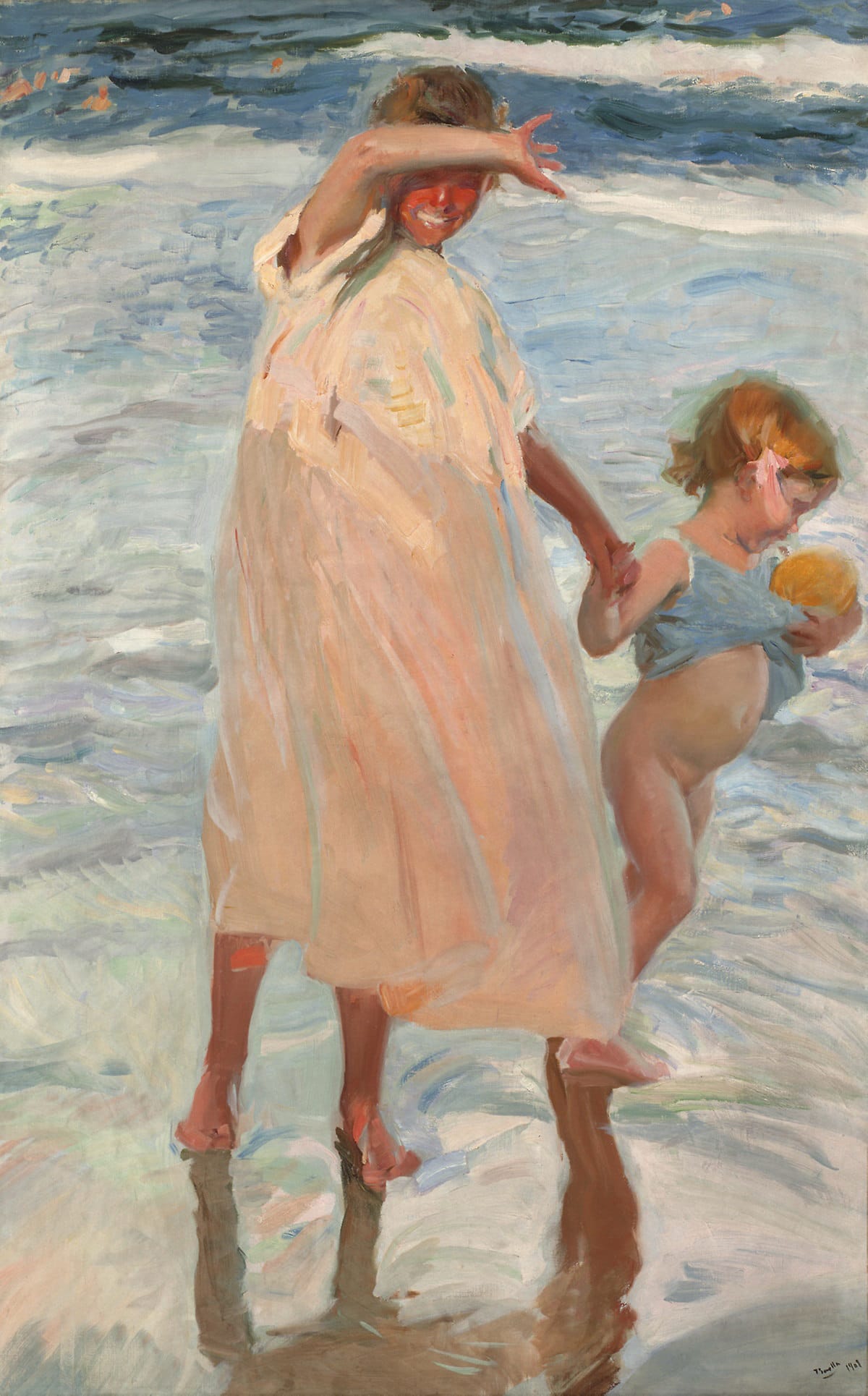Sorolla and the United States
SEP.26.2014 ──────── JAN.11.2015

Joaquín Sorolla
Dos Hermanas, Valencia, 1910
© The Art Institute of Chicago
Exhibition
SEP.26.2014 ── JAN.11.2015
Location
Recoletos Exhibition Hall
Paseo Recoletos 23, 28004 Madrid
Constructing the history of this extraordinary success, the exhibition included exceptional loans from, among others, the following institutions: The Hispanic Society of America, The Metropolitan Museum of Art, Brooklyn Museum, The Morgan Library, all in New York; Museum of Fine Arts, Boston; The Art Institute of Chicago; Philadelphia Museum of Art, Philadelphia; Mildred Lane Kemper Art Museum, Saint Louis Art Museum, St. Louis; Meadows Museum, Dallas; San Diego Museum of Art; The J. Paul Getty Museum, Los Angeles; Museo Sorolla, Madrid.
The exhibition
Joaquín Sorolla is one of the great names in 20th century Spanish painting and a key reference point in the field. He created some of the most delightful and jubilant images of the luminous and Mediterranean Spain, an optimistic and modern place.
In 1909, when Sorolla had already achieved all the major awards and honors to which a Spanish painter of his day could aspire, he held his first exhibition in New York, at the Hispanic Society of America, where it enjoyed unprecedented success. Under the aegis of this institution, the artist subsequently presented his works in Boston and Buffalo. Two years later, this same success was repeated in Chicago and St. Louis.
The exhibition was organized into seven sections: In the United States before his major exhibitions displayed Sorolla’s work that had already been acquired by Americans before he had arrived on their shores. Huntington. Sorolla’s Patron in America gathered together the work resulting from Sorolla’s relationship with the American millionaire Archer Huntington, a passionate admirer of Spain. In the section entitled Ryan. The other American patron we could see the works that Ryan purchased, many during the exhibition held in Chicago in 1911. The section entitled Portraits sold in the United States featured the portraits of distinguished members of North American society that Sorolla was commissioned to paint. Beach scenes featured work from the artist from 1900 onwards, although a large number focus on his investigations into light and color dating from his time in Jávea. Landscapes and gardens demonstrated how for Sorolla, landscape painting was an essential genre that he would go on to develop throughout his evolving artistic career. Finally, the section entitled Studies, jottings and color notes introduced us to a mature Sorolla whose sketches attempted to convey the richness and spontaneity of his art.
The exhibition revealed the best of a mature Sorolla who had reached the maximum level of refinement while also focusing on his remarkable international reputation.




